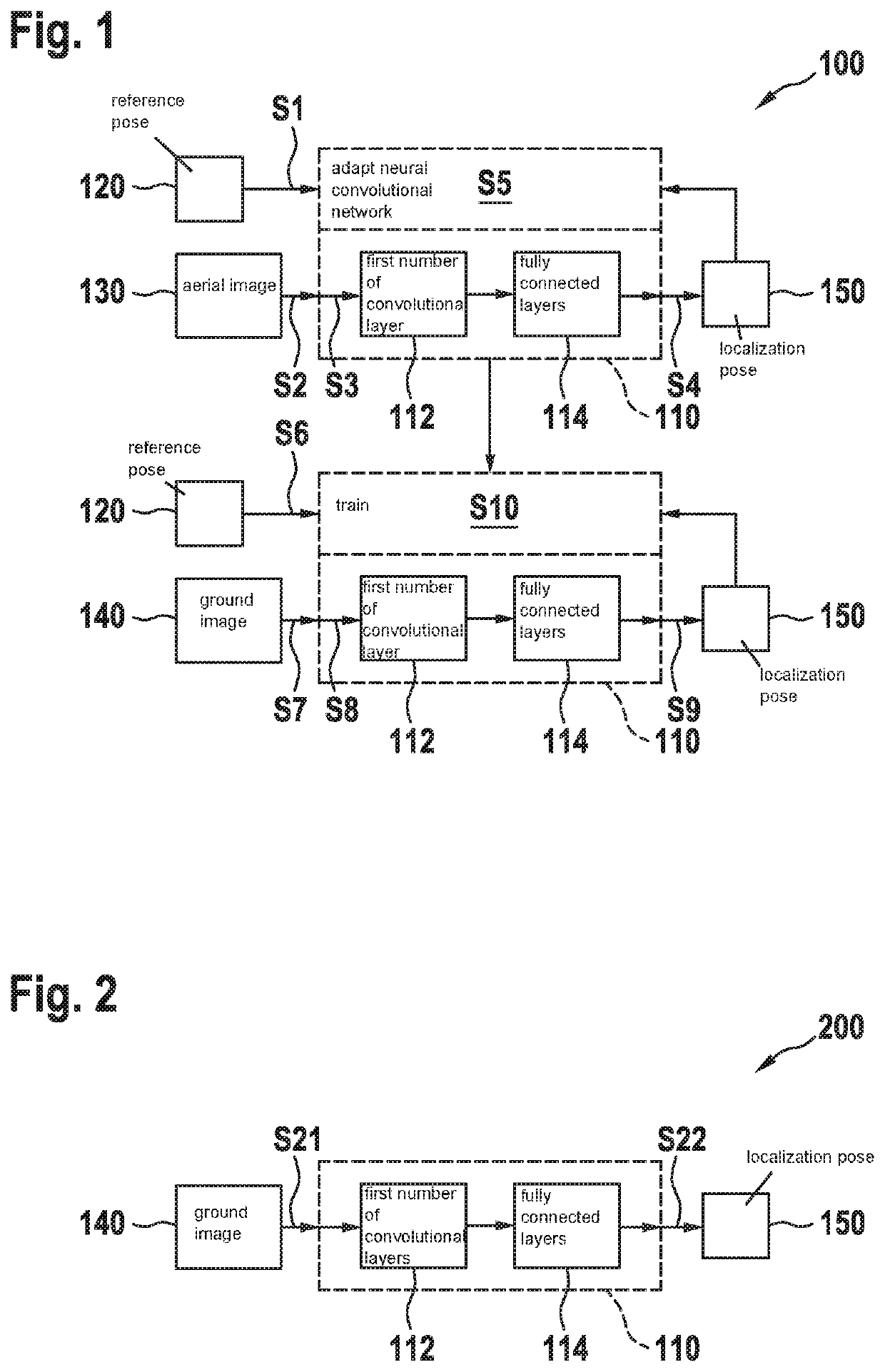Method for training a neural convolutional network for determining a localization pose
- Summary
- Abstract
- Description
- Claims
- Application Information
AI Technical Summary
Benefits of technology
Problems solved by technology
Method used
Image
Examples
Embodiment Construction
[0068]FIG. 1, using a data flow diagram, schematically shows a method 100 for training a neural convolutional network 110 for determining a localization pose (150) of a mobile platform using a ground image (140) with the aid of a neural convolutional network (110) in accordance with an example embodiment of the present invention. Method 100 has a first multitude of aerial image training cycles, each aerial image training cycle having the following steps: In a step S1 of an aerial image training cycle, a reference pose 120 of the mobile platform is provided. In a further step S2, an aerial image 130 of the environment of the mobile platform in reference pose 120 is provided. In a further step S3, aerial image 130 is used as an input signal of neural convolutional network 110. In another step S4, respective localization pose 150 is determined with the aid of an output signal of neural convolutional network 110. In an additional step S5, neural convolutional network 110 is adapted in o...
PUM
 Login to view more
Login to view more Abstract
Description
Claims
Application Information
 Login to view more
Login to view more - R&D Engineer
- R&D Manager
- IP Professional
- Industry Leading Data Capabilities
- Powerful AI technology
- Patent DNA Extraction
Browse by: Latest US Patents, China's latest patents, Technical Efficacy Thesaurus, Application Domain, Technology Topic.
© 2024 PatSnap. All rights reserved.Legal|Privacy policy|Modern Slavery Act Transparency Statement|Sitemap

